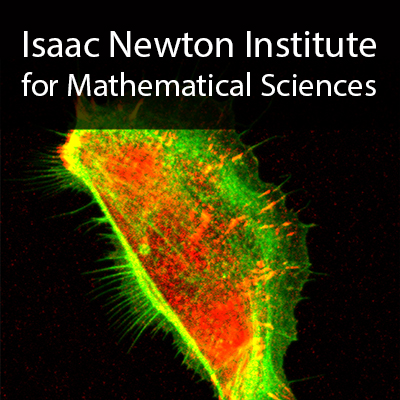Osmosis, Electrophysiology and Cell Movement
1 hour 24 mins,
1.20 GB,
MPEG-4 Video
640x360,
29.97 fps,
44100 Hz,
1.95 Mbits/sec
Share this media item:
Embed this media item:
Embed this media item:
About this item

| Description: |
Mori, Y (University of Minnesota)
Thursday 16th July 2015, 10:45 to 12:00 |
|---|
| Created: | 2015-07-17 18:41 |
|---|---|
| Collection: | Coupling Geometric PDEs with Physics for Cell Morphology, Motility and Pattern Formation |
| Publisher: | Isaac Newton Institute |
| Copyright: | Mori, Y |
| Language: | eng (English) |
| Distribution: |
World
|
| Explicit content: | No |
| Aspect Ratio: | 16:9 |
| Screencast: | No |
| Bumper: | UCS Default |
| Trailer: | UCS Default |
| Abstract: | Water movement in the biological tissue is controlled primarily by osmosis, and the primary osmolytes are ions (Na, K, Cl etc). It is then natural to think that electrophysiology is in some way related to cell movement. This indeed seems to be the case; there is mounting evidence that ion channels and aquaporins play an important role in cell movement. In this talk, we will first review some classical facts about electrophysiology, focusing on its role in cell volume control. We will also discuss the classical subject of fluid secretion/absorption in epithelial systems, and compare this with recent work on a mode of cell movement that seems to be predominantly osmotic. We will then present a mathematical framework that couples electrophysiology, osmosis and cell mechanics in a natural way that allows for the study of this interplay. We will show preliminary 2D computational results of a deforming model cell moving using osmotic forces. |
|---|---|
Available Formats
| Format | Quality | Bitrate | Size | |||
|---|---|---|---|---|---|---|
| MPEG-4 Video * | 640x360 | 1.95 Mbits/sec | 1.20 GB | View | Download | |
| WebM | 640x360 | 672.99 kbits/sec | 414.05 MB | View | Download | |
| iPod Video | 480x270 | 526.31 kbits/sec | 323.81 MB | View | Download | |
| MP3 | 44100 Hz | 251.96 kbits/sec | 155.01 MB | Listen | Download | |
| Auto | (Allows browser to choose a format it supports) | |||||

